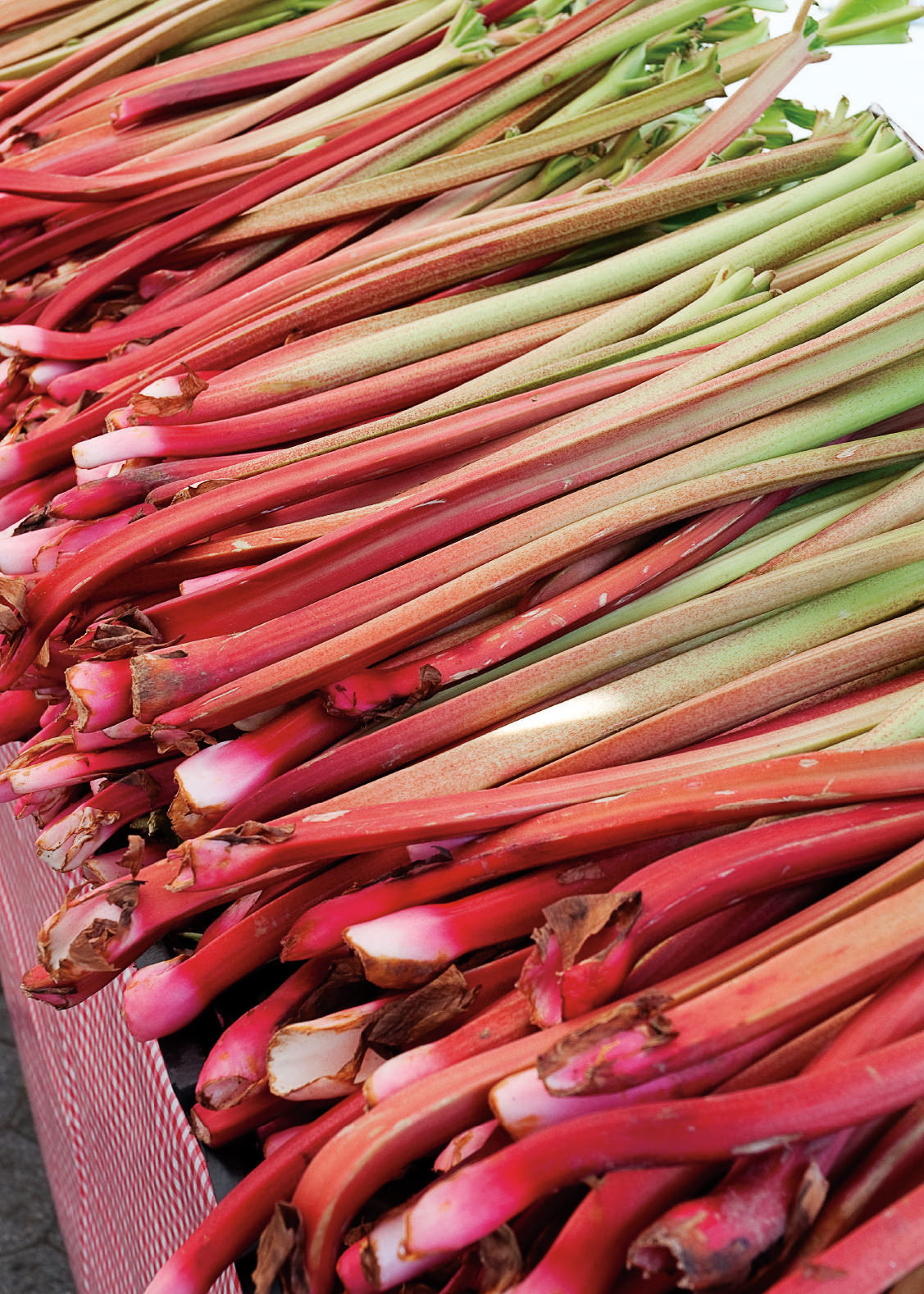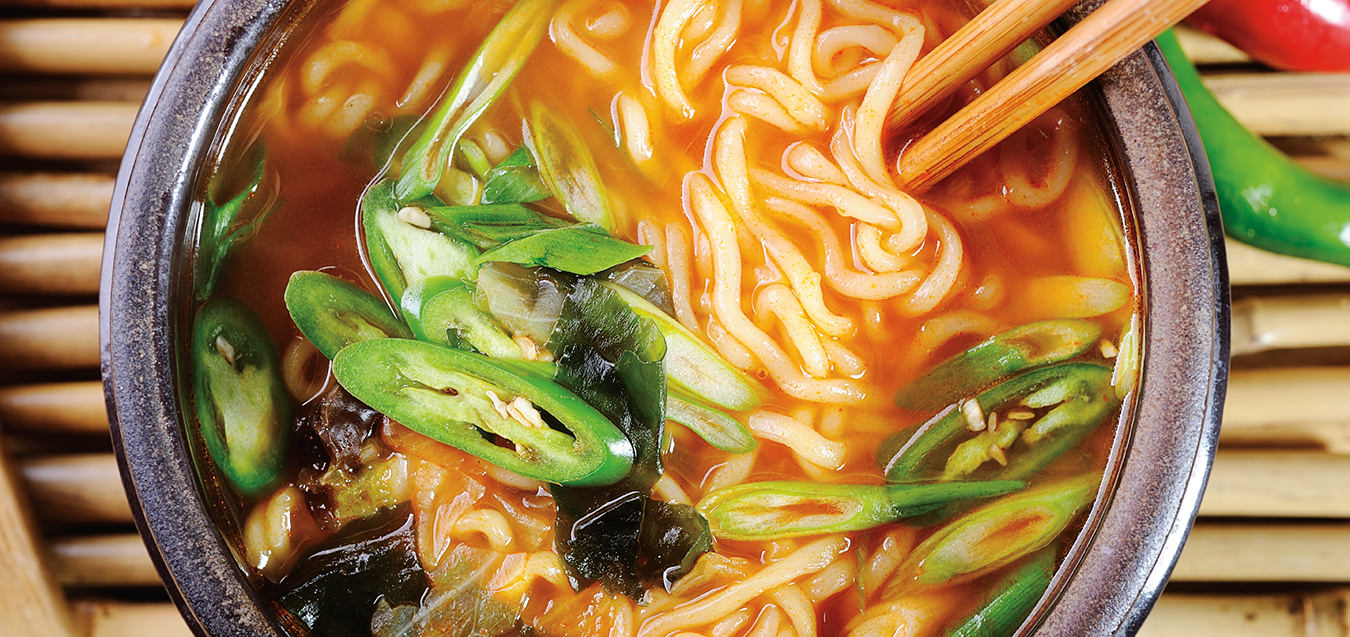The Artful History of Harvesting Sea Salt
Sea salt licks.
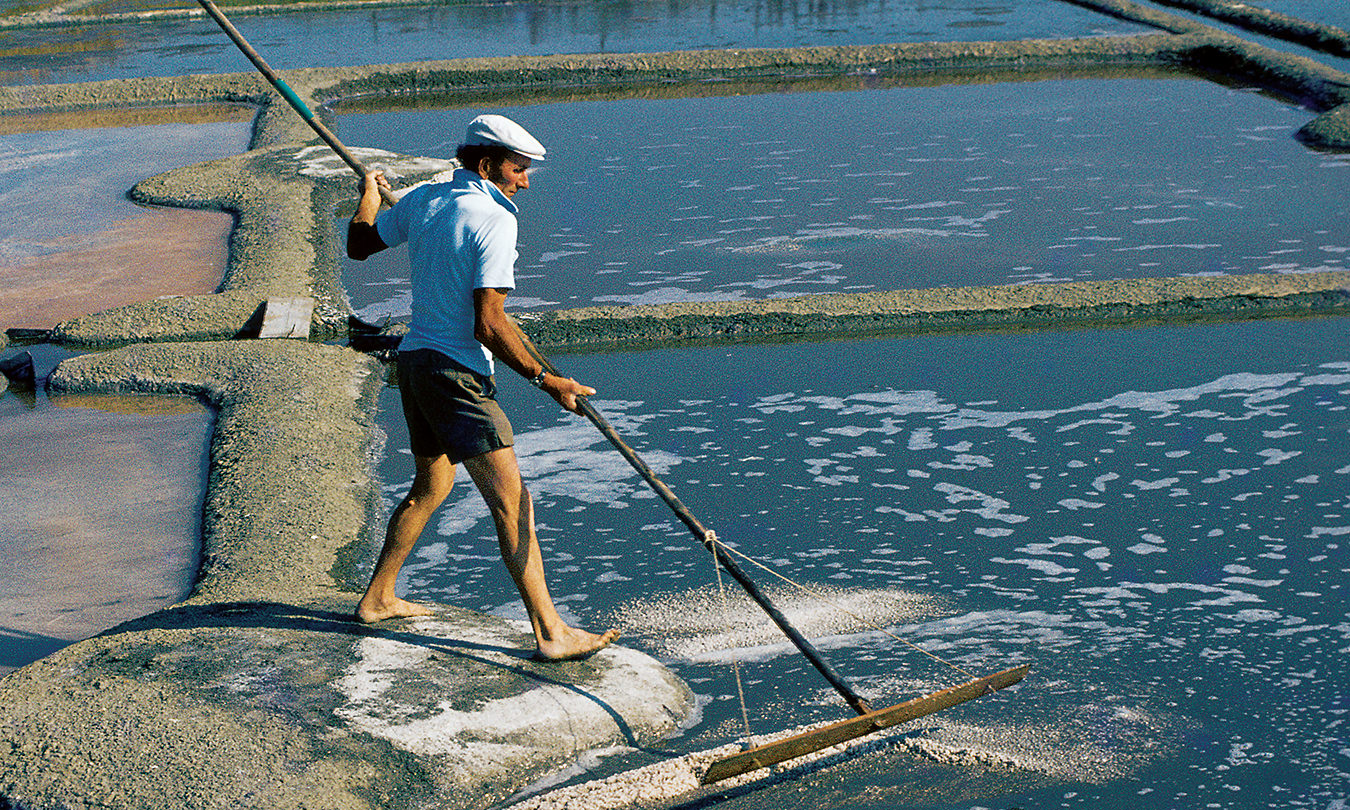
Something mysterious happens when unshelled peanuts are encrusted with rough-textured salt. Crunch one between your teeth, throw the shell on the ground, and you discover that just enough salinity has been transferred to your tongue to flavour the nut inside. What’s more, transformed into glistening nuggets, these peanuts are no longer their dun-coloured everyday selves but the pupae of rock crystal butterflies. I could imagine them suddenly bursting free, shaking their shimmering wings and soaring high, like Fabergé bibelots, above the grey-brown Cretan hillside where 20 or so of us had gathered for a communal feast. Blame it on multiple tumblers of home-made wine but the notion that salted peanuts might fly is not as far-fetched as it sounds: salt truly is a miraculous substance.
At this meal, for instance, it would temper the fattiness of lamb slaughtered that morning and now, not ten feet away from the table, turning brown and shiny as lacquer over the fire. Salt was in the sharp-flavoured feta cheese crumbled into the immense plastic bowl of country salad. Salt had helped preserve the olives from down in the valley. Everywhere, salt was working its wonders. Across the Mediterranean, salt-preserved lemons were giving distinctive tartness to Middle Eastern fare. Across the Atlantic, salted pretzels were being sold on Manhattan sidewalks. Even in those countries where salt’s usage is not traditional, there was salty miso and soy sauce, all sharing the global goal of waking up taste buds, and provoking one of the four primal sensations that our tongues can identify.
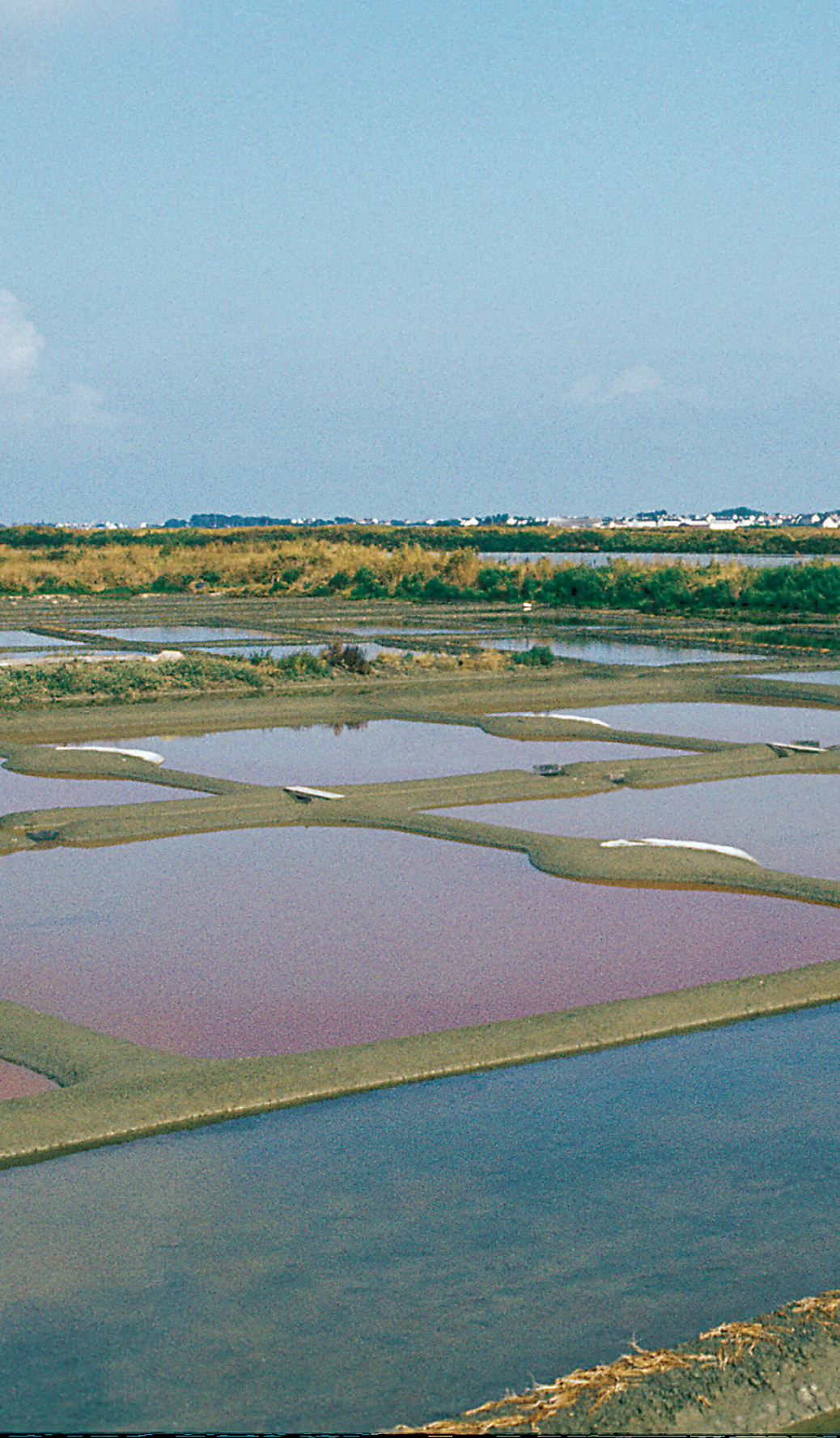
Salt pans at the Guerande Penninsula.
Fortunately, salt is everywhere, lying deep in the earth or sloshing around in the water that covers two-thirds of the earth’s surface. Chemically speaking, many different salts exist, but when we say “salt” we normally mean sodium chloride, the base for common or garden table salt which often has other substances added to help it run more freely. “When it rains, it pours” has long been the playful slogan for Morton’s salt, its iconic young lass with umbrella hammering home that moist salt clogs salt shakers. Her future could be in doubt. It’s not just that a few grains of rice in the shaker works equally well but that salt shakers are fast becoming redundant. These days, silver salt cellars lined in cobalt blue glass are dug out of attics, and, like chess kings, on the dinner table a salt grinder stands across from the pepper mill. The ordinary salt-shaker doesn’t cut it any more for one simple reason. Several steps lower on the saline chain, today’s most revered salts aren’t fine pourable grains but a heftier beast altogether.
As with wine, the salt that connoisseurs most respect originates in France, and the Chateau Pétrus in the cellar is an all-natural sea salt from Brittany, specifically the marshes near the town of Guérande. Here, it is said, the Atlantic is cleaner. What is definite is that the milder micro-climate is conducive to the gathering of salt from long, narrow fields where, as the trapped sea-water evaporates, paludiers harvest greyish sel gris. While tasty enough served alongside a pot au feu, this is everyday salt: nothing for gourmets to get excited about. But, at certain times during the summer, when conditions are precisely right, the paludiers are able to skim off a single day’s salt crust, the cream of the cream, the fleur de sel, literally “the flower of salt.” Purest and least salty of all, it represents less than 2% of the entire Guérande harvest; enthusiasts say it has a faint whiff of violets. Because fleur de sel is costly (and prestigious enough to be listed by name on menus), chefs use it more as garnish than condiment, sprinkling it over a dish as it is rushed to table so that diners can savour the ephemeral pleasure of the delicate crackle of the crystals before they dissolve.
Far less valuable, and much more readily available, is the salt gathered on France’s other coastline. Just as the Dead Sea is so-called because of its high salinity, the town of Aigues-Mortes in the western Camargue gets its name from the “dead waters” around. Walk along the tops of its high ancient walls and look south to where colossal salt dunes glisten under the sun. This is the salt that ends up in those tall blue cylinders bearing the “whale” logo. Also harvested locally is “fleur de sel de Camargue” prettily packaged and bearing the printed signature of the saunier who gathered it, cheeky competition from the south for the established northern variety. Further stirring the culinary pot, American food authority Corby Kummer writes, in The Pleasures of Slow Food, of the harvesting of flor de sal on Portugal’s southern coast, a “many would say superior” version, he notes provocatively, to that of the French Atlantic.
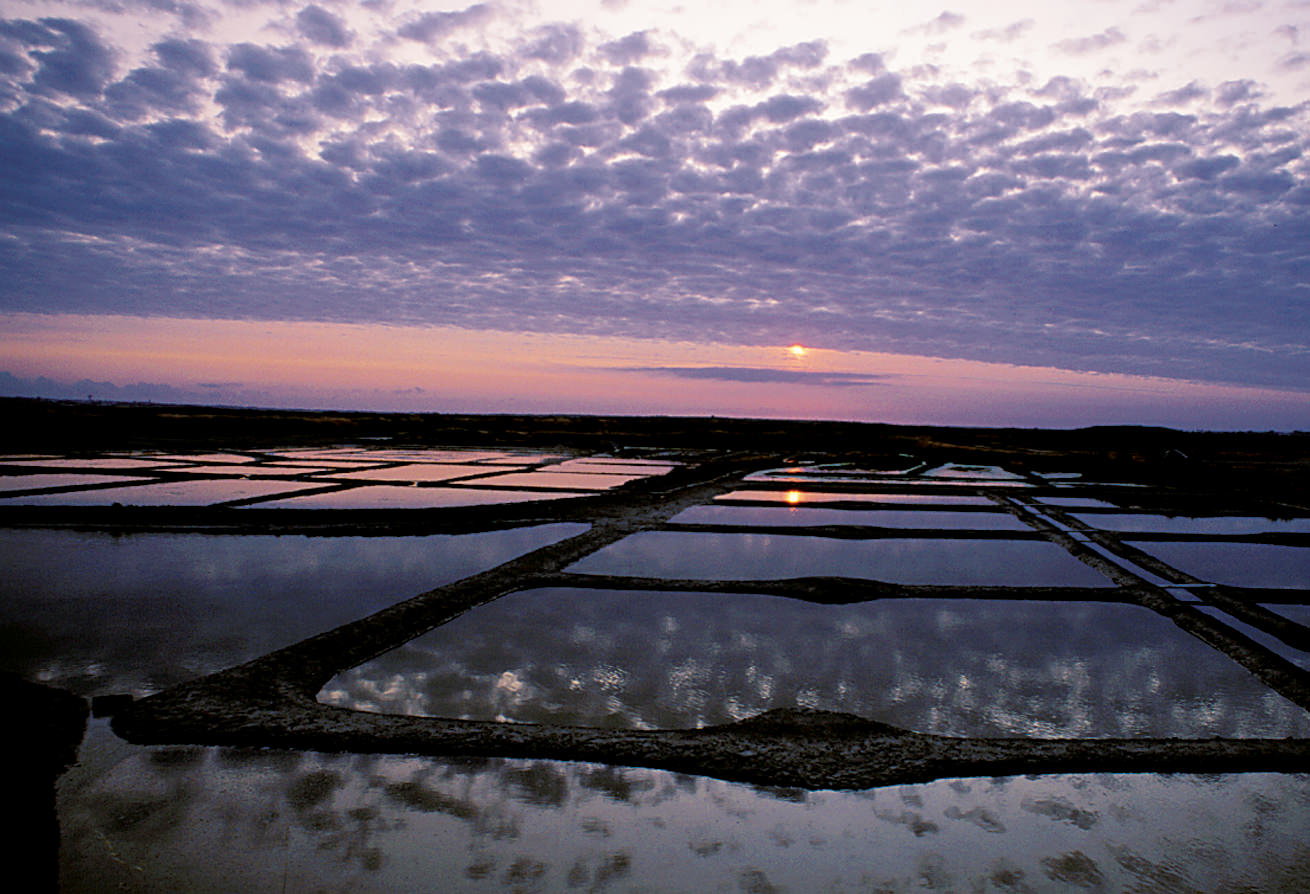
Salt pans at the Guerande Penninsula at dusk.
In France, salt-harvesting is a profession so respected that the sauniers of the Camargue are identified by name. I saw the underside of salt gathering in north-west India where, in the glaring mid-summer heat, salt drifts across the highway like the first phase of a snowstorm. Living in primitive huts, the salt gatherers and their families work from six to noon, and from four in the afternoon till seven when night descends and the flat landscape gleams once again with a spectral light. They are paid just enough for today’s work to purchase the number of calories they need to do tomorrow’s.
Fortunately, salt is everywhere, lying deep in the earth or sloshing around in the water that covers two-thirds of the earth’s surface.
The few crystals of Indian salt that I stowed in my purse were too small and fragile to become part of what is now an expanding salt collection. Side by side comparisons emphasize differences. Fleur de sel sparkles like a dish of diamond chips. Sel gris is moist and looks a bit grubby. Herbie’s Spice Shop in Sydney was the source of a bag of rock salt crystals from South Australia whose largest facets measure up to seven millimetres wide. Next to it in the cupboard is a little Zip-Loc bag filled with salt from the Baja, hand-harvested by friends (and thinking of Mexico conjures up the Saturn ring of salt that encircles a margarita). Each, the sel gris, the fleur de sel, the Malden salt from England, and the others has its own taste; some are slightly more bitter, some, like the best wines, resonate in your mouth.
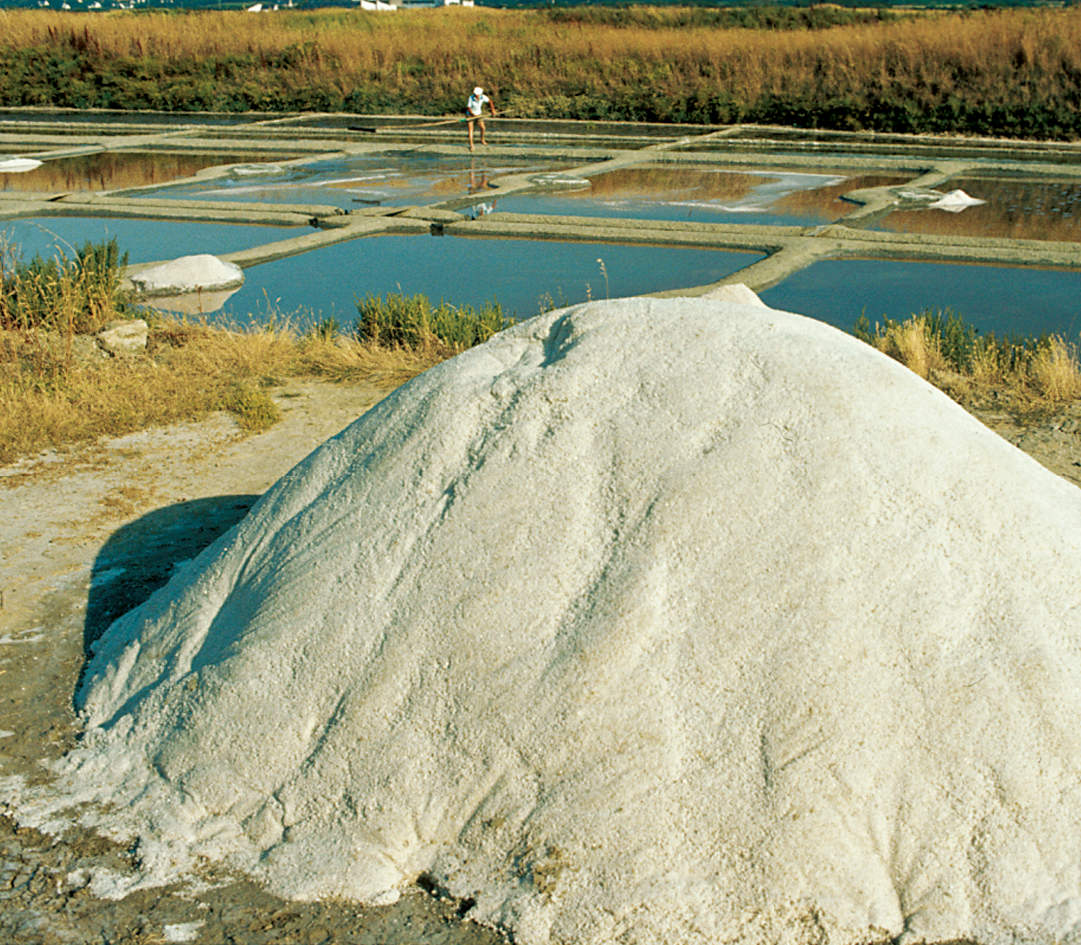
As a home cook, I know I can get away with omitting the occasional spice or seasoning but a pinch of salt? Impossible. Salt is the spin doctor that enhances flavour while rarely drawing attention to itself. It helps cooked vegetables stay green, leaches bitterness from eggplants, and, in the form of a brine, makes meats succulent, and shrimp once again taste of the sea. In times gone by, salt was used to lower the freezing point of water so that earlier generations could churn fresh strawberry ice cream on a languid summer day. But it was in winter that the salt-box really came into its own. Without salt, there was no fresh meat. With salt there was duck, seethed in its own fat, and stored in big brown pottery confit jars. Salt beef was a staple of bourgeois Victorian dinner tables. In her eponymous Book of Household Management (a 2,000-page tome weighty enough to stun an ox) 19th century English uberhousewife Mrs. Isabella Beeton provided not only the scoop on gin cocktails and domestic medicines but also instructions for preserving beef. First take a 12 to 16-pound piece of meat. Spices, salt-petre and a half-pound of bay-salt (the term then used for salt obtained by natural evaporation), made up the rest of the recipe.
Culinarily speaking, the union of pig and salt has turned out to be the most prolific marriage. Roguishly curling their whiskers, the hirsute maintain that a moustache-less kiss is like an egg without salt. But no mention of eggs without bacon, a situation as unthinkable as life without ham. Smithfield ham, jambon de Bayonne, the hams of Spain with their hooves left on, a high-kicking chorus line hung from the ceilings of a store in Madrid; satiny prosciutto, salted and air-dried, and, in Parma, coming from fortunate porkers fed on the whey drained from the making of Parmagiano: without salt none of these could exist.
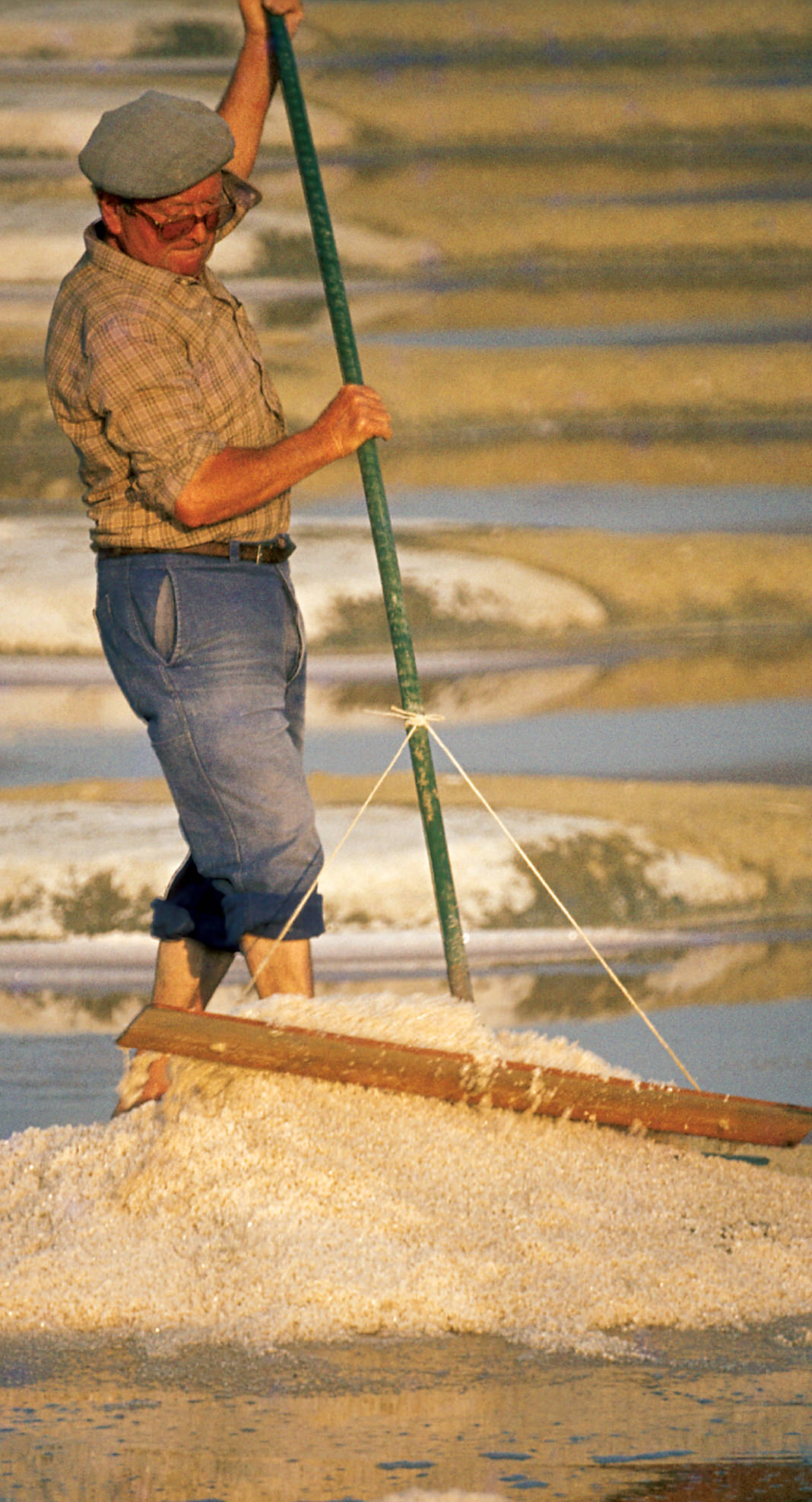
As with meat, so with fish. Centuries ago, European fishermen learned to preserve their catch with salt, transforming soft-fleshed cod into a substance as hard and pale yellow as the sole of an ancient mariner. Think of Scottish kippers, Scandinavian gravlax, the contentious anchovies on a pizza. It’s hardly surprising that salt has always been highly valued to the point where its Latin name, salus, became the root of the word “salary.” (Speaking of which, Britain’s Maldon salt is still produced in an area where salt-gathering was initiated by the Romans 2000 years ago.)
Preserving, and playing up flavours, salt really is miraculous stuff, but not just in the kitchen. A small, swiftly-poured hillock of salt on a white linen cloth sucks up spilled red wine like magic. A halved lemon dipped in salt shines copper as effectively as any metal polish. Outdoors, a light sprinkling of this white wonder substance turns ice to slush, garden slugs to mush.
And, on a Greek hillside, plain old peanuts into objects of transcendent beauty.
Photography by Ole Hoyer and Wendy Snowdon.

